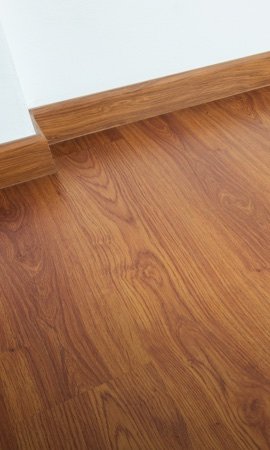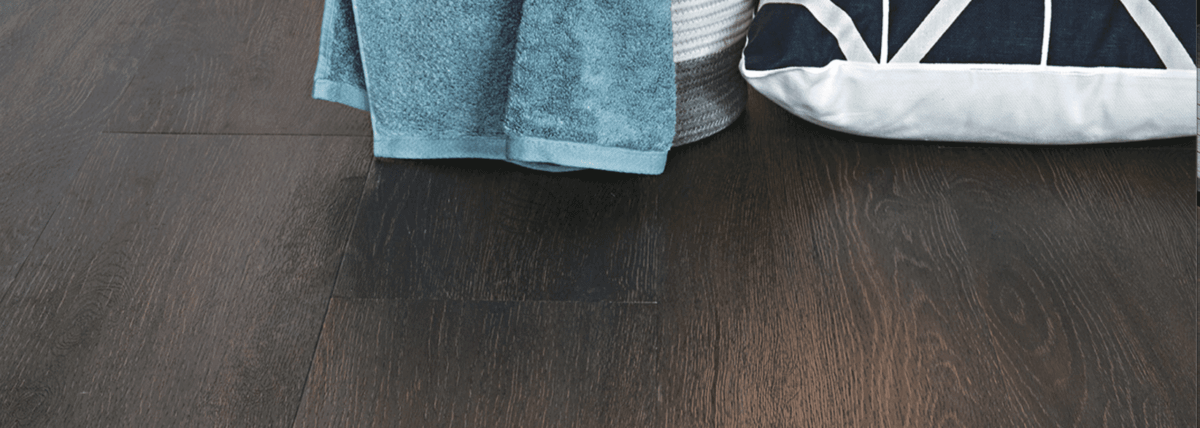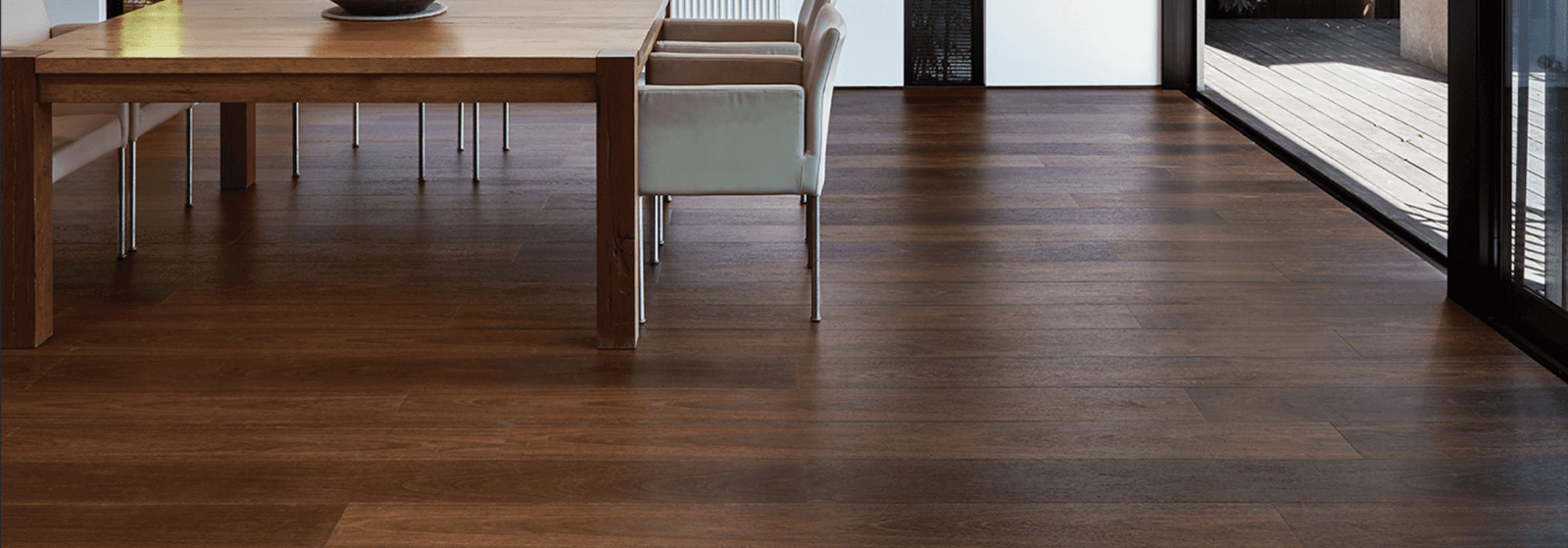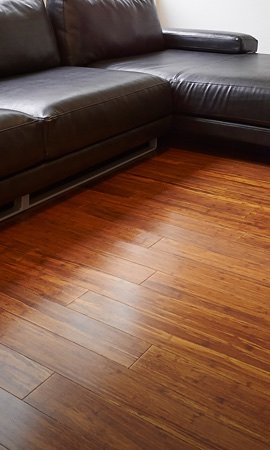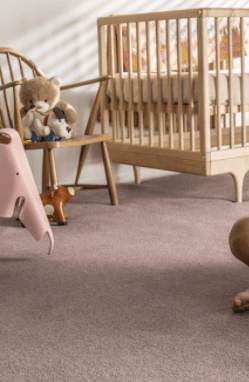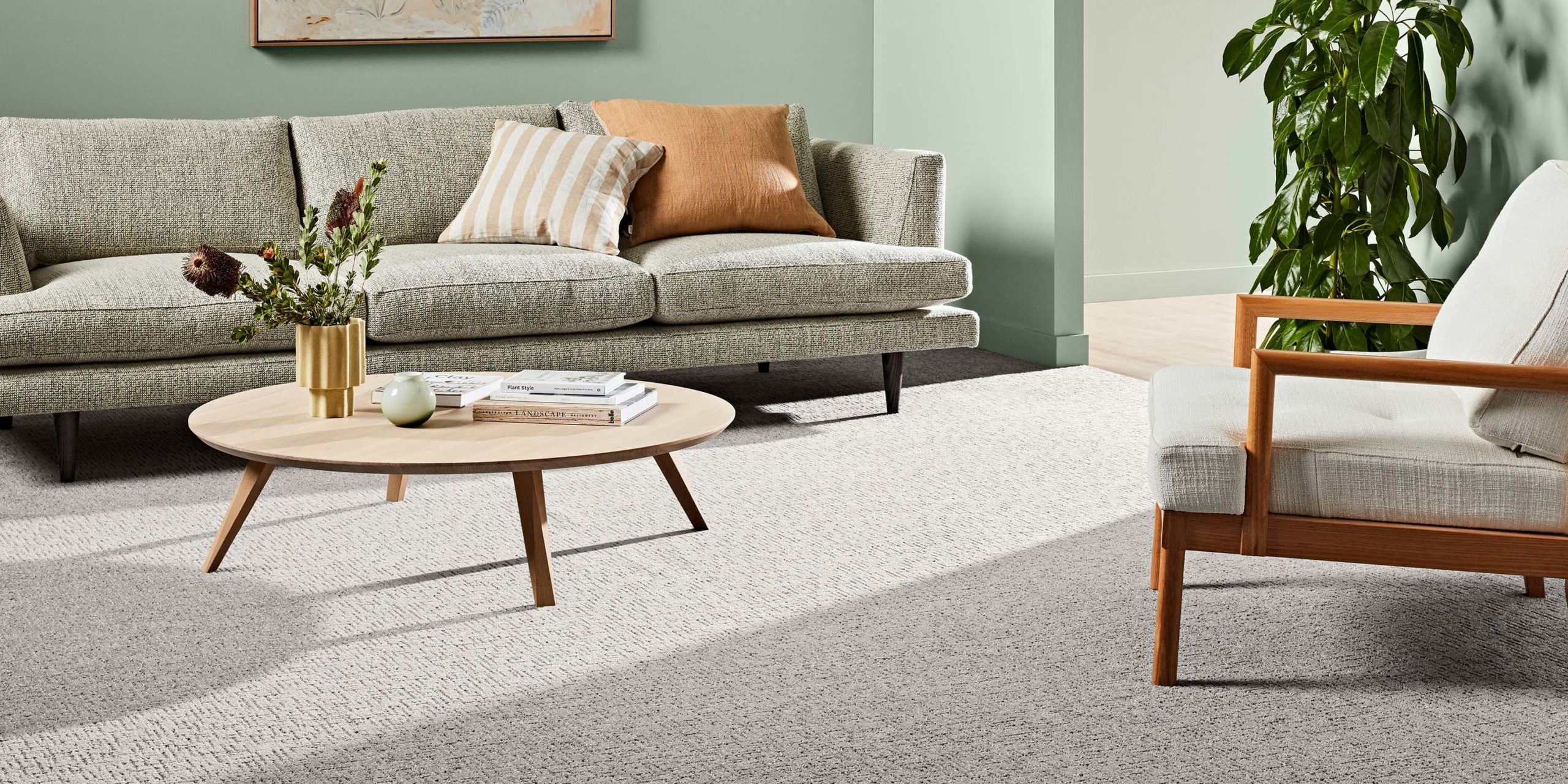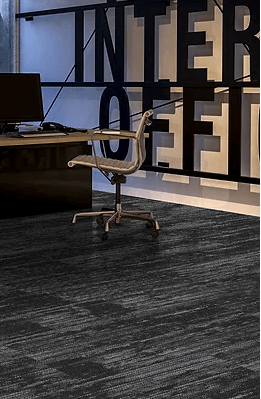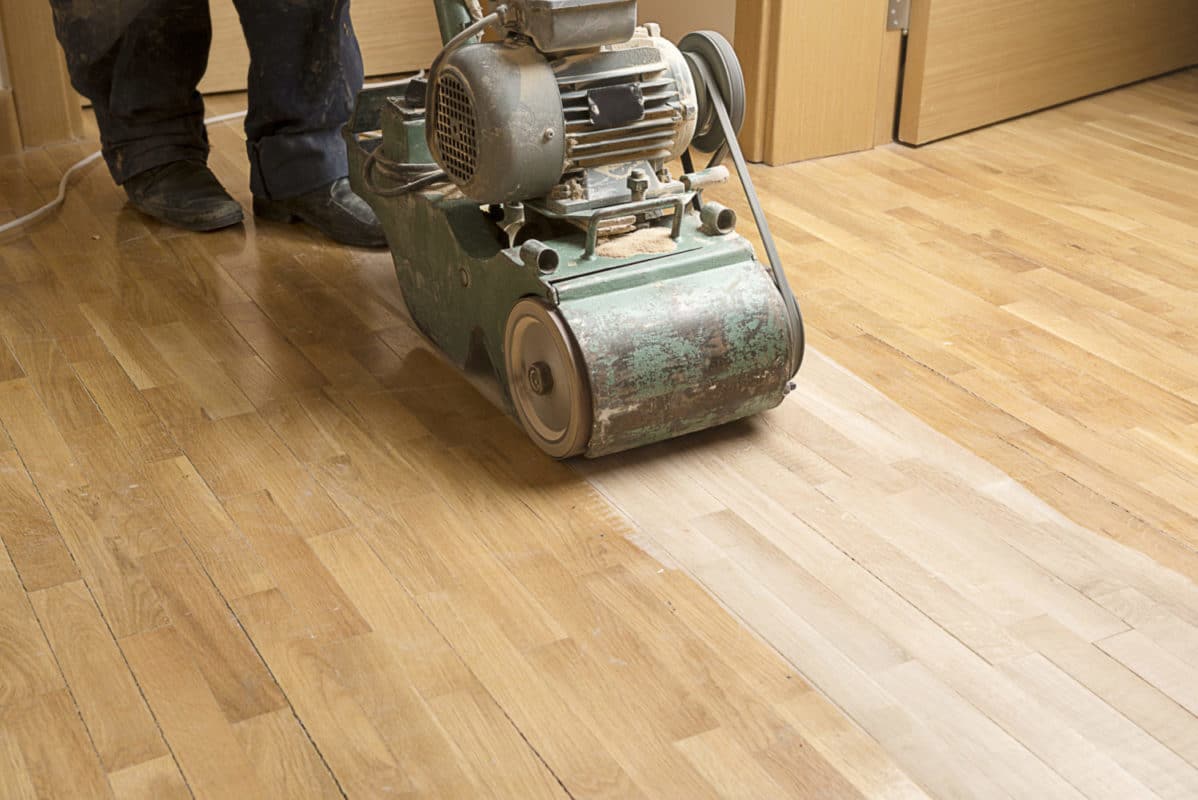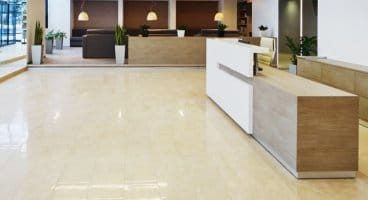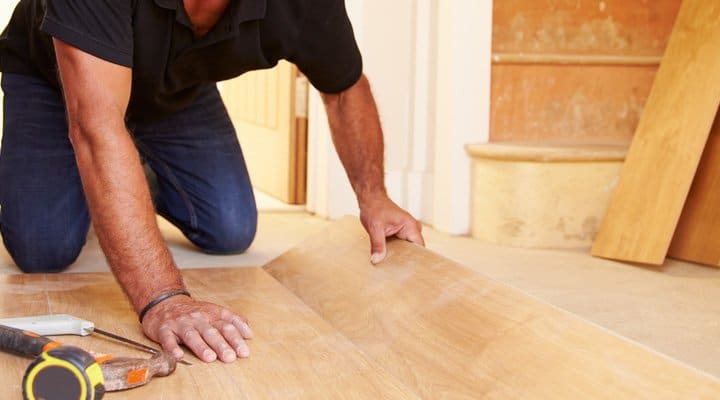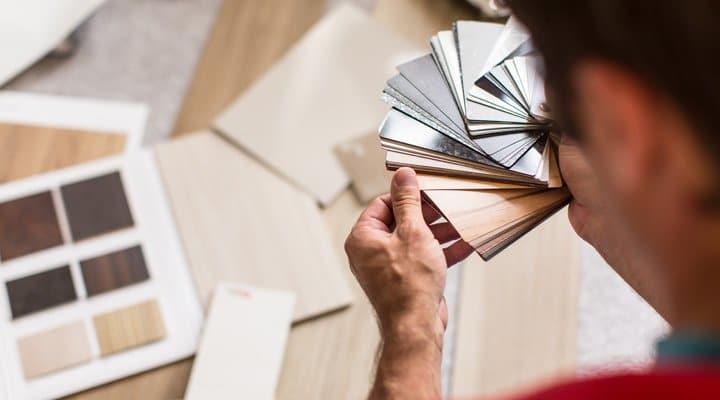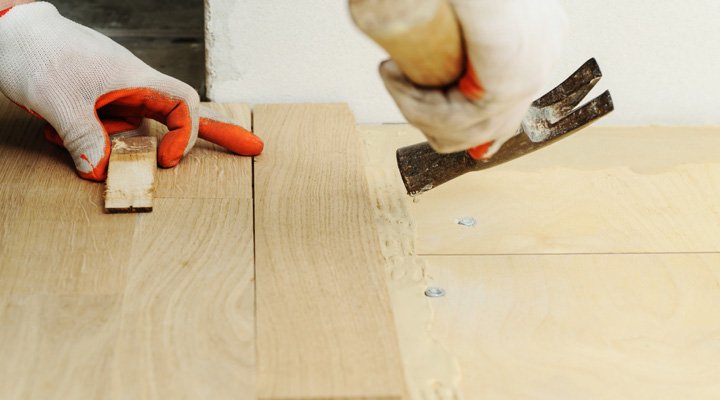

14 Aug Ultimate Guide to Choosing Timber Flooring [In Australia]
So you’re looking for a new floor to install in your home or office, and you just can’t look away from the natural warmth and beauty of timber flooring. So what’s next?
We get it – selecting and installing your new floor can be confusing because of all of the research and choices that you’ll need to figure out. But it doesn’t have to be difficult.
In this article, we’ll simplify the process, guiding you step-by-step through the process of choosing a timber floor. By the end of this article, you should hopefully be able to decide on the timber floor that looks great and suits you the best.


Solid Timber vs Engineered Timber Floors?
The first step in your flooring journey is to choose between solid timber or engineered timber floors.
Solid timber flooring is a floor constructed entirely from real timber (wood) from slow-growing trees. Meanwhile, engineered timber flooring is a type of layered floor with an upper layer of real hardwood or oak timber combined with several pieces of plywood underneath.
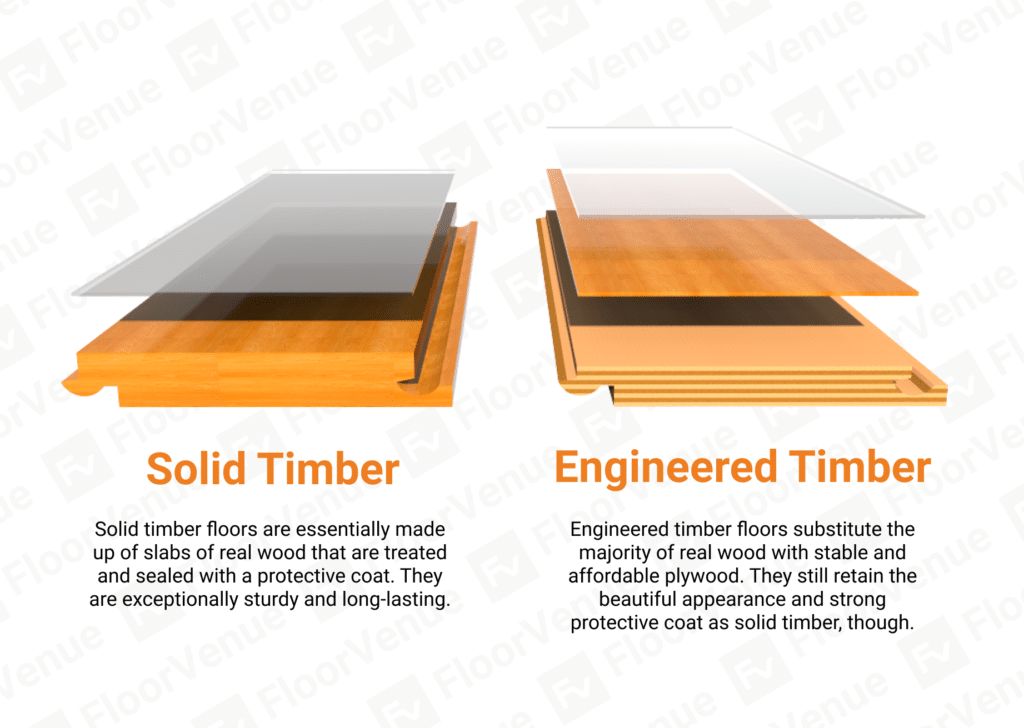

So what does this mean for you? Essentially, solid timber floors have a longer lifespan because they can be sanded back many more times, whereas engineered timber floors are more affordable and stable (that is, they don’t expand or contract as much during temperature changes).
After choosing your flooring type, it’s time to set out the particular features of your floor, such as choosing between prefinished and raw timber, floorboard width, and surface coatings. This is slightly different between solid timber and engineered timber floors, so we’ve detailed these factors below.
For Solid Timber Flooring
A) Solid Timber Flooring: Prefinished or Raw?
Prefinished timber flooring is a solid timber floor that has already been coated (stained and sealed) in the factory, ensuring the best possible finish.
This makes prefinished timber floors easier, quicker and cheaper to install. Prefinished floors also do not require an acclimatisation period before installation, which means that you don’t have to wait for your floorboards to adjust to the climatic conditions of your space.
Meanwhile, raw timber flooring comes un-coated and un-finished into your home.
After installation, raw timber floors need to be sanded and coated, which takes up added time, complexity and cost. However, this also gives you immense flexibility in choosing your own stain (light or dark) and finish (glossy, matte, etc.), and you can get a more uniformly coated floor (with no joint bevels) when installed professionally.
Both prefinished and raw timber floors can be sanded many times, depending on its thickness and the depth of previous sand backs. This means that you can revitalise any tired-looking timber floors by revealing the fresh surface underneath.
B) Solid Timber Flooring: Choose Species and Grade
As the base timber for your floor, the species of timber that you choose will substantially impact your floor’s performance and appearance over the years. In fact, we’ve written a guide to help you choose the right wood species, taking into account details like cost, colour and hardness.
After choosing a species for your new floor, it’s also important to choose between the different grades of timber. There are 3 grades of timber, distinguished by the amount of natural features (e.g. gum veins, spirals, burls and insect trails) present in the floorboards:
-
-
- Select Grade – minimal features or natural discolouration, generally at a higher cost.
- Medium / Standard Grade – more features and more discolouration.
- High Feature Grade – highest features and most discolouration, generally with the lowest cost.
-
C) Solid Timber Flooring: Plank Size (Thickness & Width)
Okay, so you’ve chosen the species of your solid timber floor. Now, it’s time to think about the thickness and width of your floorboards, which plays a surprisingly large role in changing how your space will look.
Narrower floorboards are great for smaller rooms because they can fool the eye into thinking that the room is bigger than it actually is. They’ve traditionally been a popular choice, with widths between 80 and 95mm.
On the other hand, choosing wider floorboards will give your home a stylish and contemporary look. With widths between 100 and 130mm, wider floorboards are becoming a popular option because they can really bring out the grain and texture of the wood. However, they’re more expensive and have a higher risk of warping due to changes in the weather (particularly in high-moisture areas), so you might want to consider the stabler engineered timber flooring.
Raw timber floors also allow you to choose the thickness of the floorboards, with a general range between 12 – 22mm. Thicker floors tend to feel more solid underfoot and can be re-sanded many more times, but are a more costly investment than their thinner counterparts.
D) Solid Timber Flooring: Choose Surface Finish (and Coatings if Raw Timber)
Prefinished Timber Flooring
As a prefinished timber floor that has already been coated at the factory, you have slightly fewer options in choosing your floor’s finish:
-
-
-
-
- Gloss – provides a very shiny and reflective surface on the floor, which can really draw the attention of your guests. However, its attractive look can reflect dust, dirt and scratches more than other options.
- Semi Gloss – provides some shine, but doesn’t reflect light as much as a glossy finish. (This means that any scratches won’t be as visible, either!)
- Matte – doesn’t have the shine of gloss, but instead provides a more natural finish that brings out the pattern of the timber.
-
-
-
Raw Timber Flooring
If you’re really looking to customise your floor, raw timber flooring is much more flexible in your choice of different coatings and surface finishes.
Coating
The protective coating applied on your timber floor after installation helps to create a durable surface that resists scratches and wear. Here, your primary options are:
-
-
-
-
-
-
- Oil-Based Polyurethane – resists moisture, very durable, but slow drying, releases some VOCs and may yellow over time.
- Water-Based Polyurethane – easy application and clean up, low odour and low VOCs. More prone to scratches.
- Modified Oil – contains both oil and polyurethane. They can be more durable but are slower to dry and may release VOCs.
-
-
-
-
-
The application of various coatings will depend on your particular manufacturer, so make sure to read the manual!
Surface finish
Similar to prefinished timber flooring, you also have the option of choosing the surface finish. You have slightly more options with raw timber, including:
-
-
-
-
-
-
- Gloss – provides a very shiny and reflective surface on the floor. It can be very attractive (especially in rooms that experience natural light), but can reveal dust, dirt and scratches more easily.
- Semi Gloss – provides some shine whilst not reflecting the light as much. This also means that you won’t see as much dust, dirt and scratches as gloss floors!
- Matte – very little shine, showcasing the natural patterns of the timber and hiding scratches and dust.
-
-
-
-
-


For Engineered Timber Flooring
A) Engineered Timber Flooring: Prefinished Only
Most engineered timber floors are prefinished in the factory, which means that they don’t need to be treated and sealed again once installed.
The first major decision has already been made for you – how easy is that?
B) Engineered Timber Flooring: Choose Timber (Aussie, Overseas and Oak)
Australia is home to many quality hardwood timbers that are commonly used for flooring. Many of Australia’s native timbers (such as blackbutt and spotted gum) are strong, durable and look beautiful in almost any home.
A wide range of overseas timbers from South East Asia and South America have also become popular as flooring options for Australian homes and offices. Some examples include Kempas, Walnut, and Merbau.
In particular, Australian households have increasingly looked towards oak flooring in recent years. The most popular oak floors come from Europe (France and Germany) and America (USA and Canada), which are harder and have more unique wood patterns than their Australian counterparts. These overseas oak species have tighter grain patterns due to their slower growing cycles, and the way they are cut from the log.
C) Engineered Timber Flooring: Choose Species and Grade
Here, the first thing to do is to choose a wood species (e.g. Jarrah, Spotted Gum, Ironbark) as the base timber for your floor. As we’ve outlined in this article, some factors to consider include the colour, hardness and price of the species.
If you’re looking to choose oak flooring, there’s an additional step to do with choosing a colour scheme. Although all variations of oak come from the original oak timber, these floors can come pre-stained with a diverse range of colours and styles from the factory.
Afterwards, you can then select a grade of timber for your floors, which is distinguished by the amount of natural features (discolouration, gum veins, spirals, burls and insect trails) present on the timber. This grade ranges from A to D, with A having the least natural features present.
D) Engineered Timber Flooring: Plank Size (Thickness & Width)
Engineered timber floors give you the flexibility of choosing the thickness and width of your floorboards. There are 3 primary measures that you can customise:
-
-
- Total Thickness – thickness of the entire board, generally between 12 and 21mm. Thicker floorboards feel more solid underfoot.
- Timber Veneer Thickness – the layer of real timber on the surface, generally between 0.6mm and 6mm. A thicker timber veneer allows for greater re-sanding potential down the line, which is particularly useful if you’re using this floor in a high-traffic area like the lounge room.
- Width – With a general range of 90mm (thin) to 240mm (very wide), wider floorboards can more effectively bring out the natural grain and features of the wood. Thinner floorboards are a traditional choice, and are particularly suited for giving a sense of spaciousness to smaller rooms.
-
With engineered timber floors, you also don’t have to worry as much about contraction and expansion when the weather changes. Engineered timber is far more stable and tolerant to rapid changes in humidity than solid timber, so they’re available in larger widths.
A general rule of thumb is that the thicker and wider the floorboards are, the higher they will cost initially.
E) Engineered Timber Flooring: Choose Surface
We’re nearly there! The final step is for you to choose the surface finish for your engineered timber floor. You have two main categories here:
-
-
- Smooth – a smooth surface without texture, which comes in 3 finishes (gloss, semi-gloss and matte). Floors with gloss shine in making your space look more spacious and bright. However, any scratches and marks will also become more visible.
- Hand-crafted / Hand-scraped (Matte) – the surface is treated with a wood-grain or pattern-textured finish. The surface is not smooth and features timber-like textures, creating a realistic and natural feel.
-
How Timber Flooring Installations Work
Both solid timber and engineered timber floors can be installed by gluing and nailing onto a subfloor, but engineered timber flooring can also be ‘floated’.
What are floating floors, you ask? Essentially, the floorboards are installed on top of your existing one, which makes installation easier and faster, especially for temporary renovations or for renters. The drawback? A floating floor can sound more hollow, and requires an underlayment for acoustic dampening. Additionally, you also need to make sure that your existing floor is flat enough to support a floating floor.
If you’re interested in learning more about floating floors, we’ve written a detailed guide on floating floors to help you figure out if they’re right for you!


Explore Your Timber Flooring Colours and Options
Congratulations! At this point, you’ve just completed the hardest part of specifying your new floor. What next, you ask? Why not check out our range of solid timber and engineered timber flooring colours and options, so that you can get the design you’ve been waiting for.
At FloorVenue, we specialise in supplying and installing timber flooring and would love to give you a free no-obligation quote – get in touch with us, and we’d be happy to get back to you!

